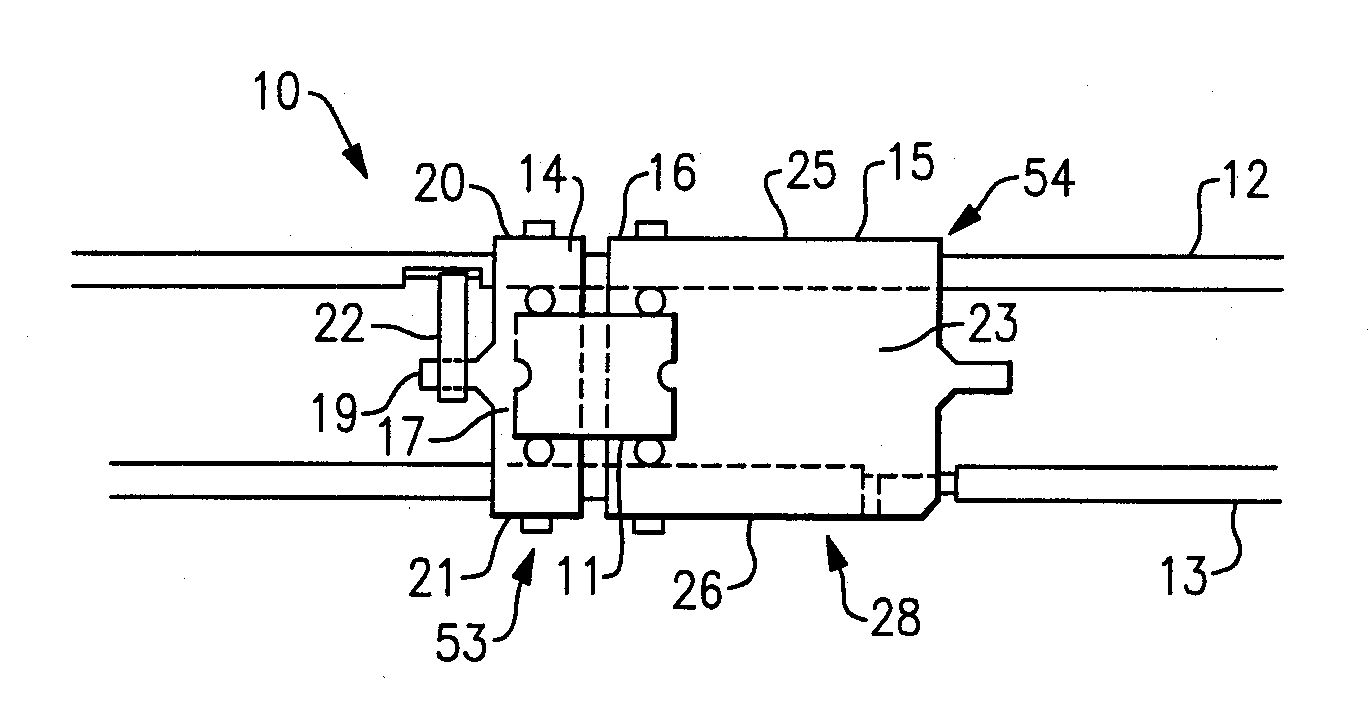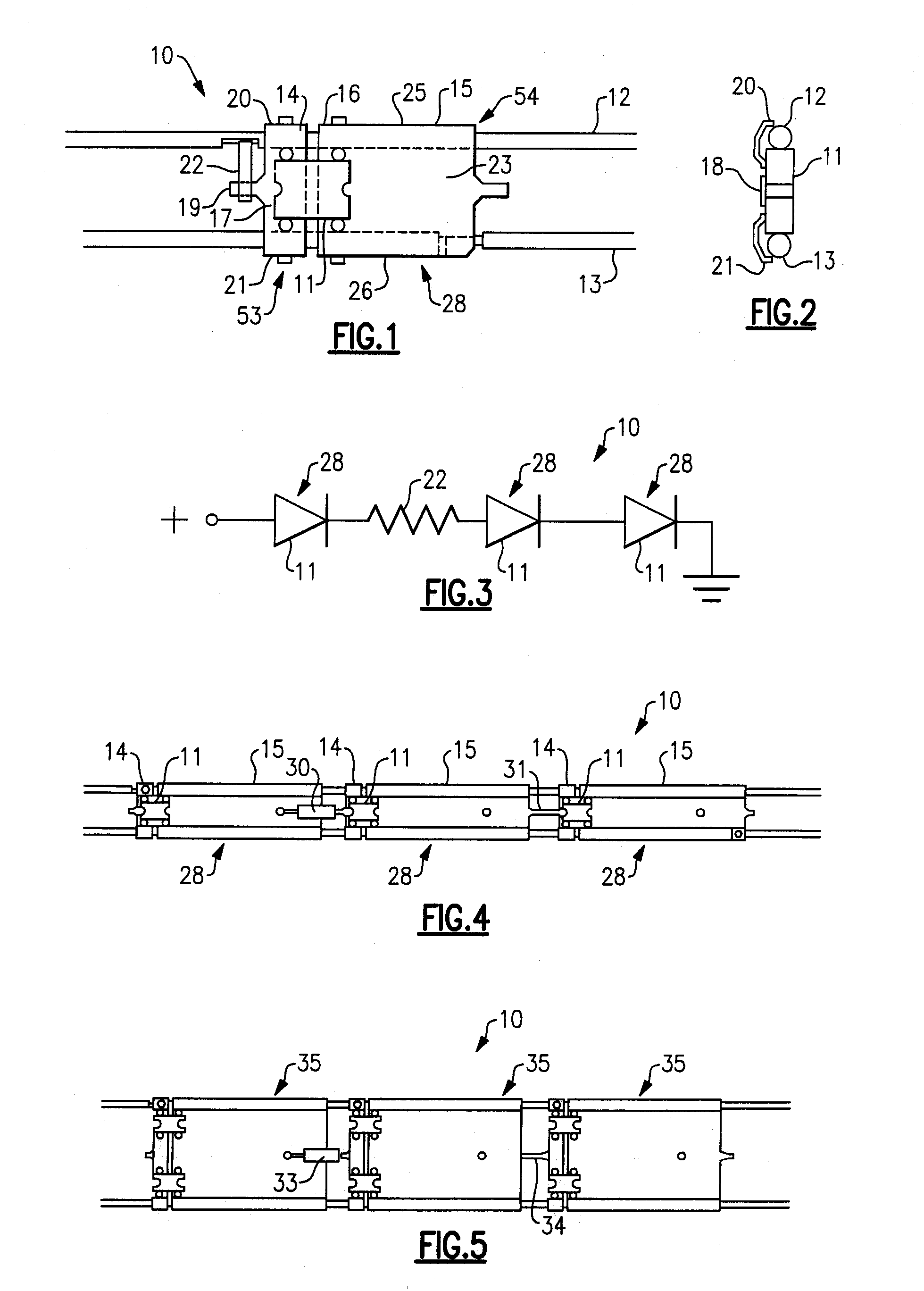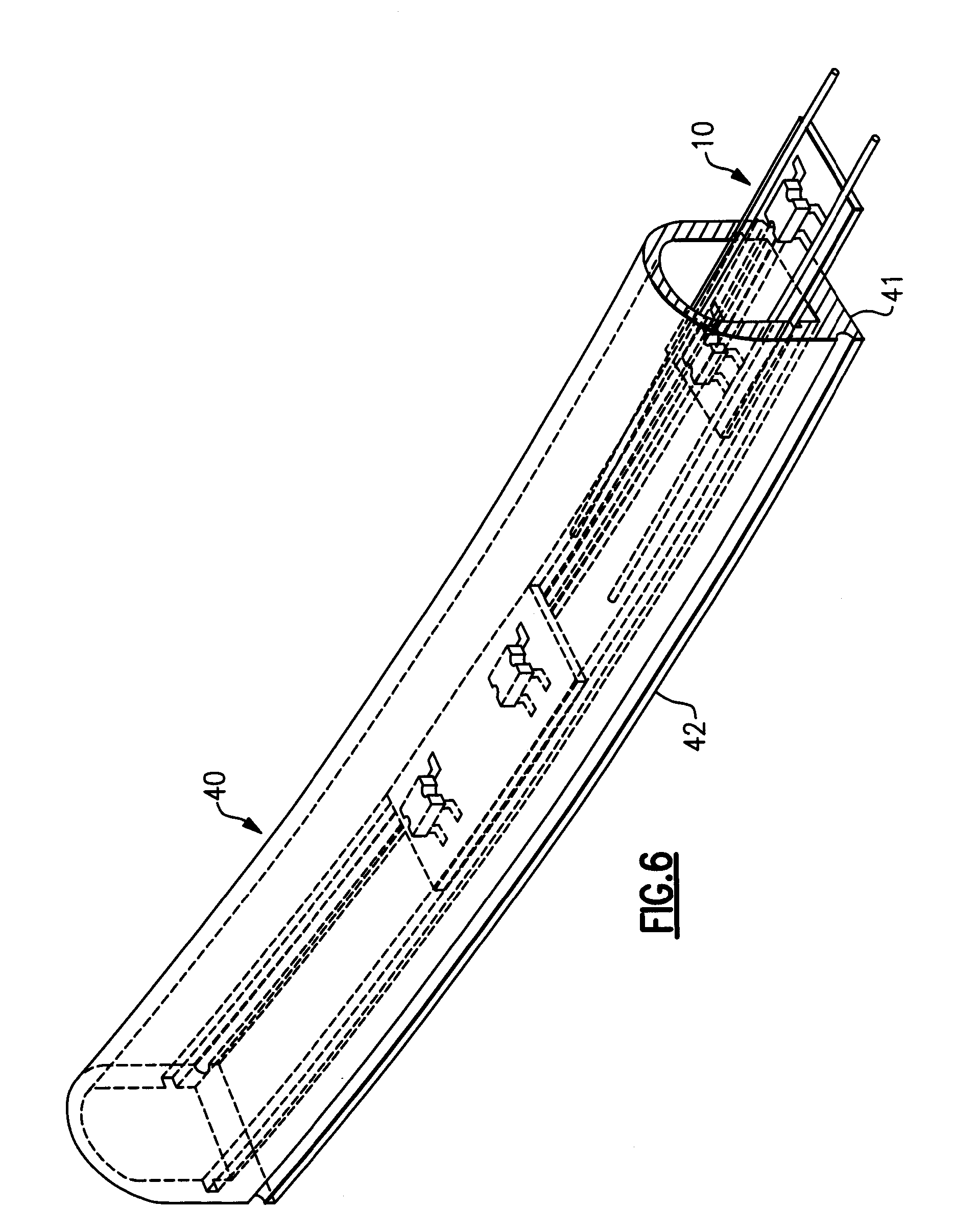Lighting strip
a technology of light-emitting modules and light-emitting tubes, which is applied in the direction of semiconductor devices for light sources, coupling device connections, lighting and heating apparatus, etc., can solve the problems of glass tube breaking, high failure rate, and high failure rate of neon type lamps used in signs. to achieve the effect of increasing structural integrity
- Summary
- Abstract
- Description
- Claims
- Application Information
AI Technical Summary
Benefits of technology
Problems solved by technology
Method used
Image
Examples
Embodiment Construction
[0039] Before describing in detail the particular improved light-emitting module in accordance with the present invention, it should be observed that the present invention resides primarily, though not exclusively, in a novel structural combination of conventional materials and discrete components associated with the aforementioned light-emitting module and not in the particular detailed configuration thereof. Accordingly, the structure and arrangement of these conventional components have, for the most part, been illustrated in the drawings by readily understandable diagram representations and schematic diagrams. The drawings show only those specific details that are pertinent to the present invention in order not to obscure the disclosure with structural details which will be readily apparent to those skilled in the art having the benefit of the description herein. For example, a light emitter 1, FIG. 2 may, if desired, be any convenient light emitter connected to the present inve...
PUM
 Login to View More
Login to View More Abstract
Description
Claims
Application Information
 Login to View More
Login to View More - R&D
- Intellectual Property
- Life Sciences
- Materials
- Tech Scout
- Unparalleled Data Quality
- Higher Quality Content
- 60% Fewer Hallucinations
Browse by: Latest US Patents, China's latest patents, Technical Efficacy Thesaurus, Application Domain, Technology Topic, Popular Technical Reports.
© 2025 PatSnap. All rights reserved.Legal|Privacy policy|Modern Slavery Act Transparency Statement|Sitemap|About US| Contact US: help@patsnap.com



